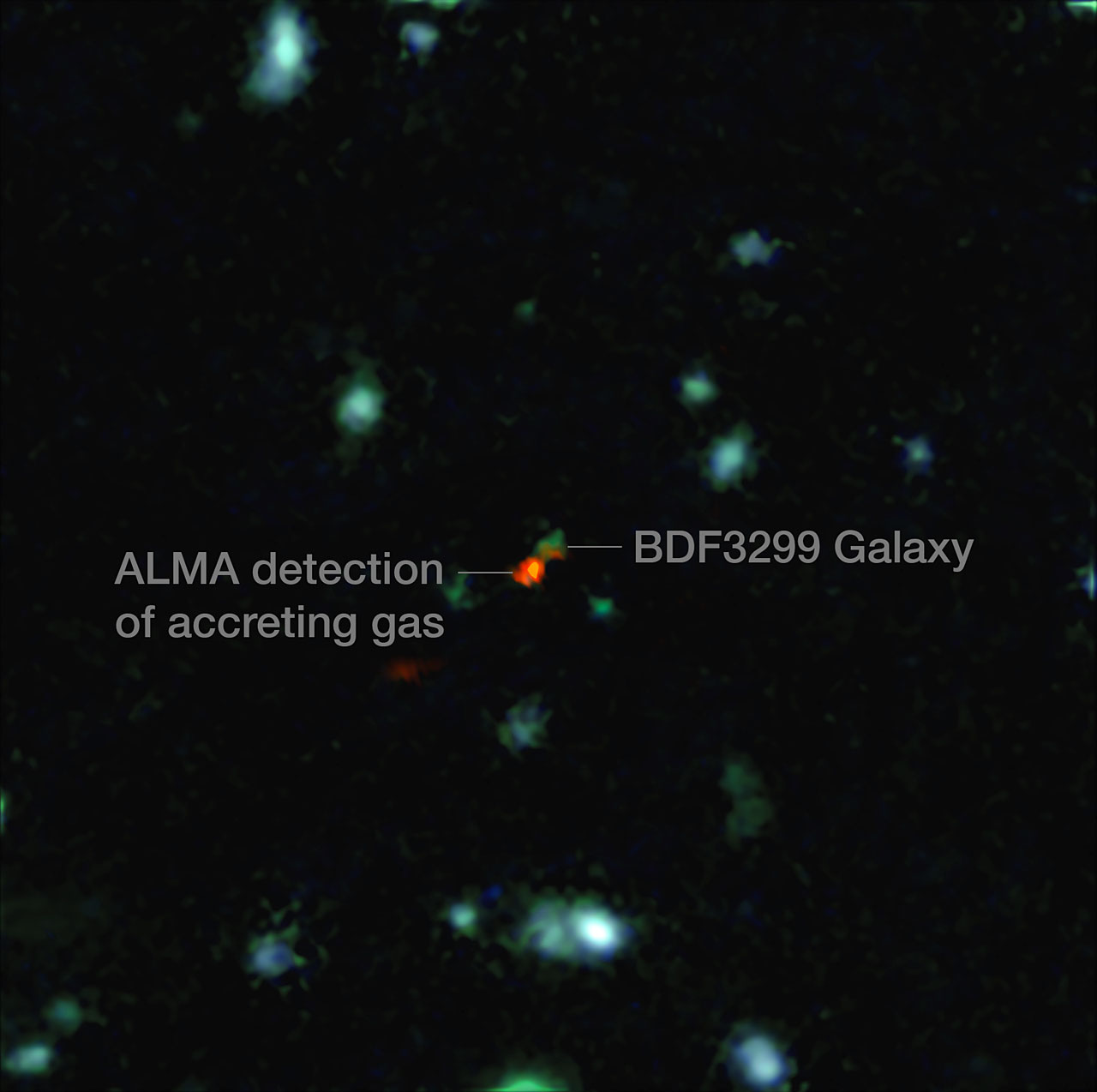Astronomers with the ALMA radio telescope discerned early galaxies with unprecedented clarity

British astronomers, using the largest Chilean Atacama Large Millimeter Array (ALMA) radio telescope, saw the forming galaxies that appeared at the dawn of the universe, during the first billion years of its existence. Previously, their images looked like colored dots - now their portrait turned out to be more detailed.
A few million years after the Big Bang, the Universe was filled with hydrogen. It was impossible to see the first stars through this fogthat gathered in the first galaxies - therefore, so early objects today are unavailable for observation. Thanks to radiation, rather large objects (stars, quasars, black holes, and then galaxies) gradually scattered the universal fog, and the Universe began to become transparent to ultraviolet radiation.
This period, scientists called the era of reionization . It took place between 550 million years and 800 million years after the Big Bang.
Astronomers set up the telescope to perceive the glow emitted by ionized carbon coming from clouds of gas inside which stars and galaxies formed. The purpose of the study was to study the formation of the first galaxies - not particularly bright, unremarkable, and at the same time the most common objects.
“This is by far the most distant galaxy from us, born less than a billion years after the Big Bang and emitting such radiation,” explains Andrea Ferrara, co-author of the work from Italy. “These observations give us the opportunity to trace the formation of the first galaxies.” For the first time, we see the very first galaxies not in the form of small dots , but in the form of objects with a distinguishable internal structure. "
The photographs show that it is not the center of the gas cloud that radiates the most, but its edge. Apparently, this is due to the fact that, due to the active formation of new stars, a rather aggressive medium was formed inside the cloud, scattering the gas with powerful radiation and supernova explosions. And the glow comes from the relatively cold carbon gathered at the edge of the cloud.
The study allows us to build fairly accurate computer models of the formation of the first galaxies and compare them with observations.
The Atacama Large Millimeter Array telescope (Atacama Large Millimeter / Submillimeter Grid, ALMA) earned last year . The system consists of 66 elements, antennas, which are located on the Chahnantor Plateau in the Atacama Desert, Chile. ALMA perceives a spectrum of radiation with a wavelength of a millimeter or less. Earlier, radio telescopes did not track (with rare exceptions) this range, but now scientists have received a new, powerful tool that is capable, in the words of one of the participants in the project, "cut a window into the Universe."
